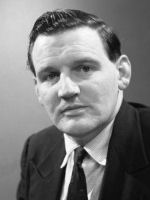An Unearthly Series - The Origins of a TV Legend
Monday, 14 October 2013 - Reported by Marcus

 The twenty-fourth in our series of features telling the story of the creation of Doctor Who, and the people who made it happen.
The twenty-fourth in our series of features telling the story of the creation of Doctor Who, and the people who made it happen.Production on the new series was progressing. The pilot had been recorded, and a revised episode one was being worked on. Meanwhile, the production team were anxiously awaiting news on whether they would be allowed to continue beyond the first story.
On Monday 14th October 1963 - exactly 50 years ago today - the TARDIS team reconvened to start a week of rehearsals leading up to the re-recording of the first episode. They had been given a second chance and this time they had to get it right.
The rehearsal venue was another drill hall, this time in Uxbridge Road, just a few hundred yards west of the Lime Grove Studios. Like the drill hall in Walmer Road, the building no longer exists and this site is now occupied by the London College of Professional Training. The cast had just four days to refine their characters and take on board all the changes requested by Head of Drama Sydney Newman before appearing in front of the cameras once more.
If they were successful, this would be the start of a long journey for the four main cast members. If the series were to continue beyond the initial four episodes, the actors' lives would be governed by a strict schedule. Rehearsals would be Monday to Thursday, followed by a long exhausting Friday in the studio, rehearsing with the cameras all day and then recording on the Friday evening. The weekend would be spent learning the scripts for the next week before the process began all over again on the Monday. The only respite would be when the actor was granted a week's holiday, in which case the character would be written out of that particular episode, or the role would be rewritten to a brief cameo, pre-recorded on film.
One person missing from the reassembled cast was Fred Rawlings, who had played the policeman in the opening shot in the pilot. He was unavailable for the remount and the role was taken by Reg Cranfield, who would therefore become the first actor to be seen in Doctor Who.
While the actors were rehearsing, they were largely unaware of the BBC politics surrounding the programme, and the memo sent by Head of Serials Donald Wilson, asking for some commitment for the series from the powers-that-be.
 In response to Wilson's memo, on Wednesday 16th October Controller of Programmes Donald Baverstock decided, having now watched the pilot episode, that he would commit to funding 13 episodes of the new series. It was not an unconditional offer though, and Baverstock was worried about the spiralling costs of a series that required so much attention.
In response to Wilson's memo, on Wednesday 16th October Controller of Programmes Donald Baverstock decided, having now watched the pilot episode, that he would commit to funding 13 episodes of the new series. It was not an unconditional offer though, and Baverstock was worried about the spiralling costs of a series that required so much attention. In a memo he asked John Mair, who was the Planning Manager, to state what "extra programme allowance will be required to finance the special effects requirements and the operating effort needed to work them in the studio." Baverstock intended to review the programme's budget by Friday 18th October, as he was due to take three weeks' leave and he wanted to decide on whether he could agree to an increase in budget before his break.
One departure that had already occurred was that of designer Peter Brachacki. Although he had come up with some innovative work on the first episode of the series, the designer and his producer, Verity Lambert, had never really seen eye to eye. Brachacki did not want to work on the series and had no great enthusiasm for the show. In addition, some of his more ambitious designs had failed to pay off. Originally, Brachacki wanted the walls to be translucent and to pulse with light when the ship was in flight. The cost, however, was prohibitive, as was his plan that the ship's controls would be isomorphic, moulded to the Doctor's hands.
So when Brachacki fell ill and it was apparent that he would be out of action for a while, the production team asked for him to be replaced on a permanent basis. His work was split between two designers, Barry Newbery and Raymond P Cusick, who would alternate between stories. Newbery took over Brachacki's designs for the first episode. One of the first problems he had to solve, though, was that the junkyard set and classroom set, used in the pilot episode, had been broken up, despite Lambert asking that they should be kept, so both sets would need to be rebuilt. The TARDIS interior, however, did remain.


SOURCES: The Handbook: The First Doctor – The William Hartnell Years: 1963-1966, David J Howe, Mark Stammers, Stephen James Walker (Doctor Who Books, 1994)

















